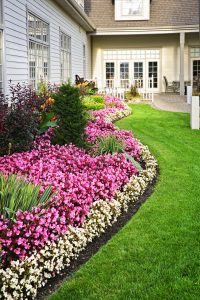Residential landscaping provides beauty and value to your home while enhancing the environment. It also can add to your comfort and quality of life while reducing the amount of work needed to maintain your yard. Residential landscape design creates a balance between the natural environment and the man-made features of your home, ensuring that the entire site functions well together. The first step of any landscape project is to evaluate the existing property, its conditions and your needs. You can achieve the most success by setting goals for your residential landscape that relate to how you and your family will use your yard. 
Base on #1 Residential Landscaping Fort Myers, one of the most important aspects of residential landscaping is creating a frame for your house to help integrate the structure into its natural surroundings and provide an inviting front entry. You can accomplish this by a combination of planting and hardscape design elements. Framing a house with trees and shrubs also helps soften the corners of the building, adding to its architectural style.
The next aspect of residential landscaping is to consider how you, your family and others will use the yard. Often, you will want to include areas for outdoor dining and entertaining, children’s play, utility storage and ornamental and vegetable gardening. Other possible uses of your yard may be to have a pool, gazebo or garden shed and to provide access to the home from the street or other locations on the property.
Once you know how your yard will be used, the next step is to create a base plan for the landscape design, including a sketch of the property, its contours and identifying existing structures such as walks, drives and topographic features. You can do this by hand or with a computer software program such as a GIS application. The base plan can be drawn to any scale. It should be marked with the location of your home, utility locations (above and below ground) and any existing plants that are to be kept or removed.
It is a good idea to note the sun/shady areas of the yard as well as the direction and strength of winter winds. You can then begin to look at the available plant material and its needs such as soil, light exposure, water and viewing requirements. It is best to choose plants that are native to the area or adapted to it. These are better suited to the climate and will grow and perform well over time.
It is also a good idea to avoid over-planting. A crowded landscape can look unruly and be difficult to manage. It is best to space out plant selections to keep the landscape looking clean and unified. It is also a good idea to include some evergreen or berry-producing shrubs to provide year-round visual interest. This is a trend that many home buyers are looking for and will be a plus when it comes time to sell the property. You can also play around with different designs at this stage on tracing paper placed over the base plan.